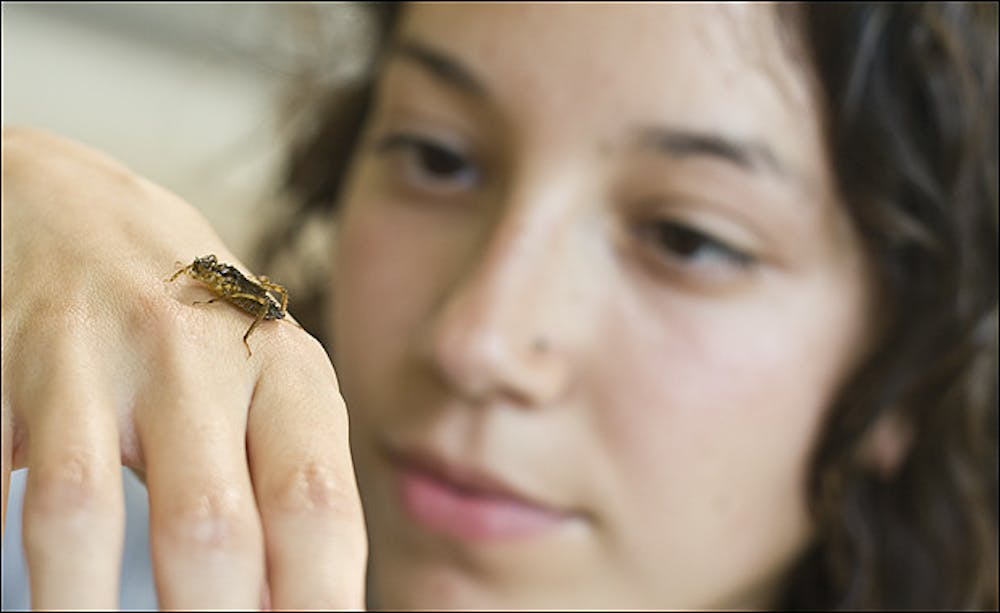Dragonflies may be the key to a scientific breakthrough that sheds light on prehistoric oxygen levels, ASU scientists said Wednesday.
John VandenBrooks, a post-doctoral fellow from Yale University, said his ASU research team is working to develop an explanation for the physiological changes in insects over time.
“This is really the first attempt to start to test these hypotheses,” he said.
VandenBrooks, who received a grant for his research from the National Science Foundation, said he is using a three-pronged approach that is unique in the field of oxygen evolution.
This method involves actual rearing of modern insects in controlled oxygen levels, studying fossils of prehistoric insects and imaging the fossils’ tracheas.
Over the past 500 million years oxygen levels in the air have varied, VandenBrooks said. One of the biggest unsolved questions is how the changes in oxygen levels affect the physiological structure of insects.
The team also began experimenting with cockroaches this summer.
“The goal of [that research] was to look at the growth and development but also to look at how the oxygen affects their internal respiratory system,” VandenBrooks said.
Cockroaches have had little change in their size since the Paleozoic era, which was between 542 and 251 million years ago, he said.
Dragonflies, in contrast, used to have a wingspan of up to 3 feet, he said.
“This research will nail down the fact about the impact of oxygen evolution on insects,” he said.
Biology junior Elyse Munoz is working with VandenBrooks and professor Jon Harrison on this project.
The data for the cockroaches collected over summer was independent of the current exploration of dragonflies, Munoz said.
The team reared about 500 cockroaches in seven different oxygen levels ranging from 12 to 31 percent, she said. The control group was 21 percent, which is the oxygen level in today’s atmosphere.
Using the method of experimentation conducted with cockroaches, the team has already begun working with dragonflies, but Munoz said these insects are more difficult to work with.
“We’re trying to find a good place to raise dragonflies,” she said. “We have to make sure the water has correct ammonia levels and make sure they have a good food source.”
Munoz explained that dragonflies lay their eggs in water and are naiads, which means they live in water until they reach adulthood. This makes water quality an extremely crucial component of experimental success.
Though the team is still in the preliminary stages of dragonfly experimentation, Munoz is excited because of the magnitude of this research in the field of oxygen evolution and hypothesizes that the team will discover groundbreaking data.
“I expect the dragonflies to be larger in the [oxygen] levels, above 21 percent,” she said.
VandenBrooks reiterated the magnitude of what the data finds with this research could mean for science.
“This is the first ever true proxy for oxygen levels in the past,” he said.
Reach the reporter at ndgilber@asu.edu.




